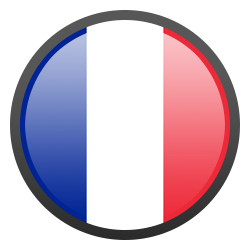
Arénisation à la plage du Château

Sur la commune de Landunvez, sur la plage du Château, on peut observer le phénomène de l'arénisation granitique. Attention l'endroit n'est peut-être pas accessible à marée haute.
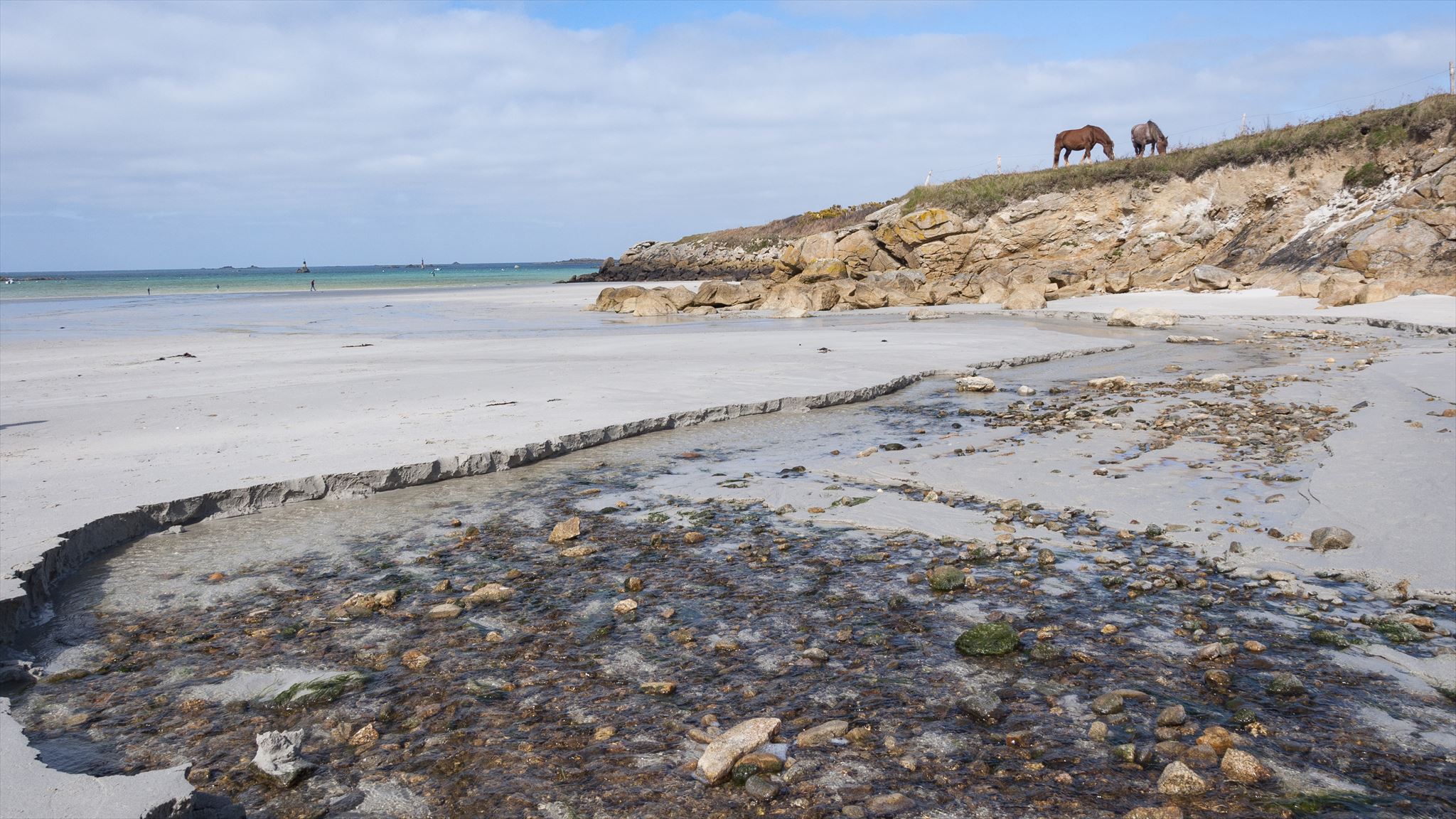
Le granite
Le granite est une roche magmatique plutonique, formée par le refroidissement lent, en profondeur, d'un magma issu de la fusion partielle de la croûte continentale. Le granite est formé de minéraux en grains tous visibles à l'œil nu, il s'agit principalement des micas, des feldspaths et des quartz. C'est une roche qui est dure et résistante mais qui n'est pas indestructible. Avec les conditions météorologiques le granite fini à la longue par s'altérer.
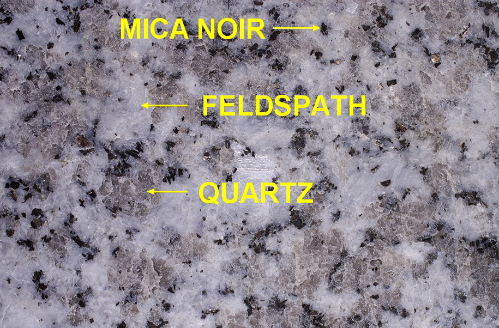
Altération du granite
Le granite est une roche dure et résistante mais elle manque de souplesse. Avec les mouvements de l'écorce terrestre et au cours de son refroidissement, le granite fini par se fissurer. Les fractures qu'on appelle également diaclases facilitent l'altération en permettant à l'eau et aux racines des plantes de s'infiltrer plus rapidement au cœur de la roche.
L'eau agit de deux façons différentes :
Les minéraux composant le granite réagissent différemment à l'altération :
-
le mica noir, en présence d'eau, s'hydrolyse rapidement en hydroxyde de fer et en argile.
-
le quartz est inaltérable
-
les feldspaths s'hydrolysent et se transforment en argiles.

Un granite altéré est appelé un "granite pourri", mais l'altération se poursuit et le granite pourri va se transformer en sable grossier pour donner "l'arène granitique"
Questions
Rappel concernant les Earthcaches :
Il n'y a pas de conteneur à rechercher ni de logbook à signer. Après avoir été sur les lieux pour chercher les réponses aux questions, loguez cette cache "Found it" et envoyez-moi vos propositions de réponses, en précisant le code GC de la cache, soit via mon profil, soit via la messagerie geocaching.com (Message Center), et je vous contacterai en cas de problème.
Questions :
1- quel est le principal responsable de l'arénisation du granite ?
2- Aux coordonnées et avec la photo spoiler, quel est l'état du granite (sain, pourri ou bien arénisé) dans les zones A, B et C ?
3- D'après vos observations, quelle est la couleur de l'arène granitique et d'où vient cette couleur ?
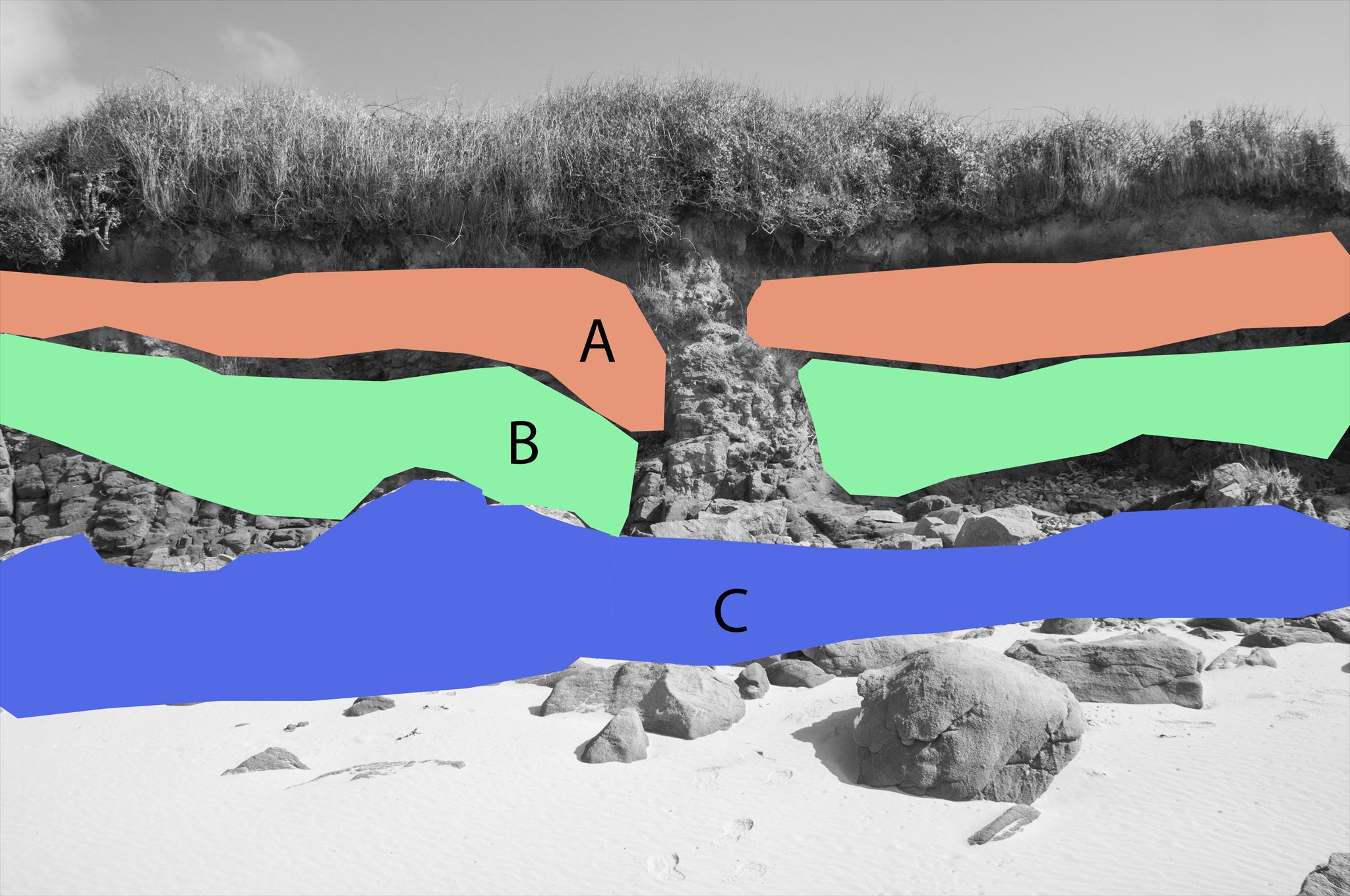

Decomposed granite of Castle beach

In the town of Landunvez, on Castle beach, we can observe the phenomenon of granite arenization. Please note that the place may not be accessible at high tide.

Granite
Granite is a plutonic magma rock, formed by the slow, deep cooling of a magma resulting from the partial melting of the continental crust. Granite is formed of grains minerals all visible to the naked eye, mainly micas, feldspars and quartz. It is a rock that is hard and resistant but is not indestructible. With the meteorological conditions the granite eventually deteriorates.

Alteration of granite
Granite is hard rock, but it lacks flexibility. With the movements of the earth's crust and during its cooling, the granite eventually cracked. Fractures, also known as joint, facilitate weathering by allowing water and plant roots to infiltrate more quickly into the heart of the rock.
Water acts in two different ways:
The minerals composing the granite react differently to the alteration:
-
black mica, in the presence of water, hydrolyzes rapidly to iron hydroxide and clay.
-
quartz is unalterable
-
the feldspars hydrolyze and turn into clays.
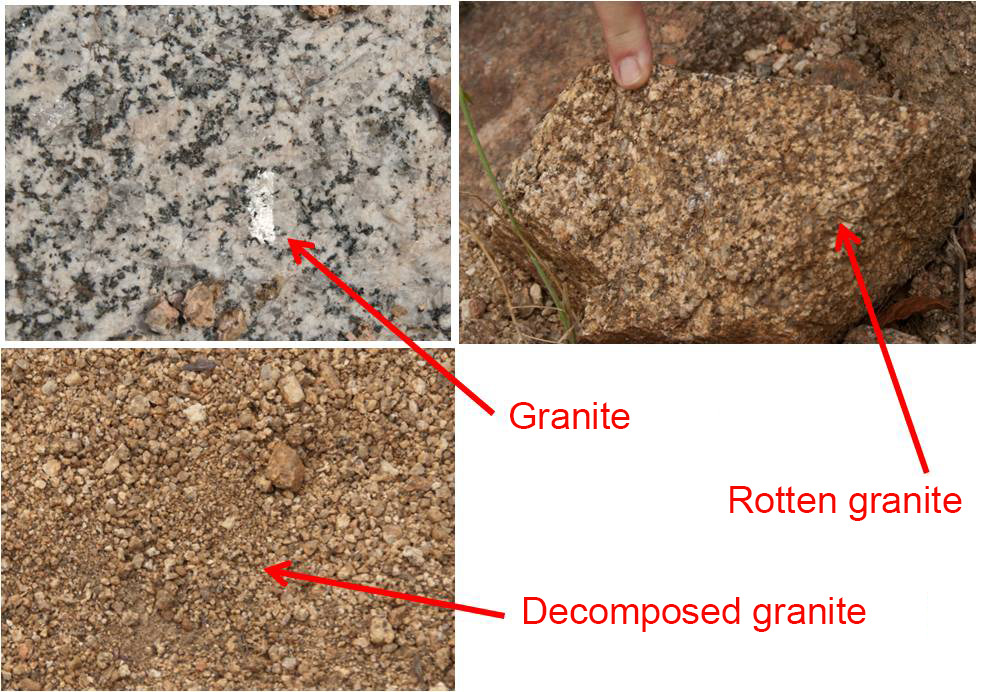
An altered granite is called a "rotten granite", but the alteration continues and the rotten granite will turn into coarse sand to give the "decomposed granite"
Questions
Reminder concerning the Earthcaches :
There is no container to look for or a logbook to sign. After having been on the spot to look for the answers to the questions, log this cache "Found it" and send me your answers, specifying the GC code of the cache, either via my profile or via messaging geocaching.com (Message Center), and I will contact you if there is a problem.
Questions :
1- who is the main responsible for the arenization of granite?
2- At the coordinates and with the spoiler photo, what is the state of the granite (healthy, rotten or decomposed granite) in zones A, B and C?
3- According to your observations, what is the color of the decomposed granite and where does this color come from?

Sources :
https://www.geowiki.fr/index.php?title=Altération_du_granite
http://svt.labry.free.fr/GranitePlanDeLaTour.htm